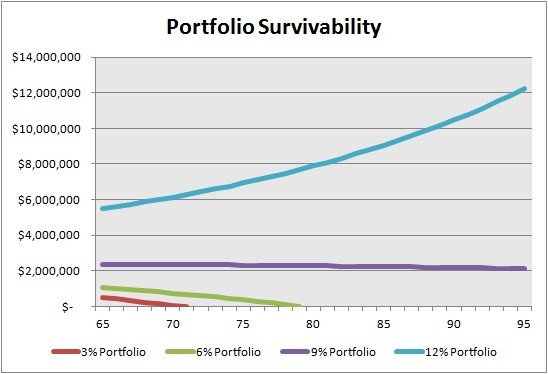How should I structure my retirement portfolio
Post on: 29 Май, 2015 No Comment

In this article
- Utilizing tax-favored savings tools Focusing on long-term returns and steady growth Advantages of portfolio balancing Keep investing, even after retirement
Answer:

Your first step is to take advantage of tax-favored retirement savings tools. If you have access to a 401(k) or other employer-sponsored plan at work, participate and take full advantage of the opportunity. Open an IRA account and contribute as much as you can. Ideally, you’d be able to invest in both an employer plan and an IRA.
Contributions to employer plans like 401(k)s are typically made on a pretax basis, but plans may also allow you to make after-tax Roth contributions. Your pre-tax contributions reduce your current income, but those contributions, and any investment earnings, are subject to federal income tax when you withdraw them from the plan. Your Roth contributions, on the other hand, have no up-front tax benefit. But your contributions are always tax free when distributed from the plan, and any investment earnings are also tax free if your distribution is qualified. Similarly, IRAs allow a choice of either tax-deductible contributions (traditional IRA) or tax-free withdrawals (Roth IRA). Plus, funds held in an employer plan or IRA grow tax deferred. These tax features may enable you to accumulate a sizable retirement fund, depending on how well the underlying investments perform.
With that in mind, you should aim for long-term investment returns and steady growth. Many financial professionals suggest a balanced portfolio of stocks, bonds, mutual funds, and cash equivalents. The percentage of each will depend on your risk tolerance, your age, your liquidity needs, and other factors. However, the notion is fading that you should change your investment allocations and convert your entire portfolio to fixed income securities, such as bonds or CDs, by the time you retire. Instead, many professionals now advise that you continue investing for long-term growth even after you retire—especially since people are retiring younger and living longer on average. Your own personal circumstances will dictate the right mix of investments for you, and a qualified financial professional can help you make the right choices.
Before investing in a mutual fund, carefully consider its investment objectives, risks, fees, and expenses, which are contained in the prospectus available from the fund. Review the prospectus carefully, including the discussion of fund classes and fees and how they apply to you.














